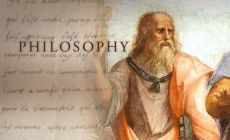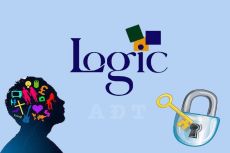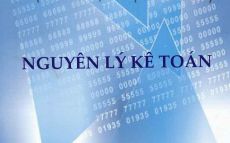140 câu trắc nghiệm Kinh tế lượng
tracnghiem.net tổng hợp và chia sẻ đến các bạn 100+ câu hỏi trắc nghiệm Kinh tế lượng - có đáp án, bao gồm các quy trình về thủ tục hải quan, khai thủ tục hải quan, chứng từ khai hải quan,... Hi vọng sẽ trở thành nguồn tài liệu bổ ích giúp các bạn học tập và nghiên cứu về môn học một cách tốt nhất. Để ôn tập hiệu quả các bạn có thể ôn theo từng phần trong bộ câu hỏi này bằng cách trả lời các câu hỏi và xem lại đáp án và lời giải chi tiết. Sau đó các bạn hãy chọn mục "Thi thử" để hệ thống lại kiến thức đã ôn. Chúc các bạn thành công với bộ đề "Cực Hot" này nhé.
Chọn hình thức trắc nghiệm (20 câu/30 phút)
Chọn phần
-
Câu 1:
A normal distribution has coefficients of skewness and excess kurtosis which are respectively:
A. 0 and 0
B. 0 and 3
C. 3 and 0
D. Will vary from one normal distribution to another
-
Câu 2:
Which of the following would probably NOT be a potential “cure” for non-normal residuals?
A. Transforming two explanatory variables into a ratio
B. Removing large positive residuals
C. Using a procedure for estimation and inference which did not assume normality
D. Removing large negative residuals
-
Câu 3:
What would be the consequences for the OLS estimator if autocorrelation is present in a regression model but ignored?
A. It will be biased
B. It will be inconsistent
C. It will be inefficient
D. All of a, b and c will be true
-
Câu 4:
If a residual series is negatively autocorrelated, which one of the following is the most likely value of the Durbin Watson statistic?
A. Close to zero
B. Close to two
C. Close to four
D. Close to one
-
Câu 5:
If the residuals of a model containing lags of the dependent variable are autocorrelated, which one of the following could this lead to?
A. Biased but consistent coefficient estimates
B. Biased and inconsistent coefficient estimates
C. Unbiased but inconsistent coefficient estimates
D. Unbiased and consistent but inefficient coefficient estimates
-
Câu 6:
If a regression equation contains an irrelevant variable, the parameter estimates will be
A. Consistent and unbiased but inefficient
B. Consistent and asymptotically efficient but biased
C. Inconsistent
D. Consistent, unbiased and efficient
-
Câu 7:
Which of the following sets of characteristics would usually best describe an autoregressive process of order 3 (i.e. an AR(3))?
A. A slowly decaying acf, and a pacf with 3 significant spikes
B. A slowly decaying pacf and an acf with 3 significant spikes
C. A slowly decaying acf and pacf
D. An acf and a pacf with 3 significant spikes
-
Câu 8:
A process, xt, which has a constant mean and variance, and zero autocovariance for all non-zero lags is best described as:
A. A white noise process
B. A covariance stationary process
C. An autocorrelated process
D. A moving average process
-
Câu 9:
Which of the following conditions must hold for the autoregressive part of an ARMA model to be stationary?
A. All roots of the characteristic equation must lie outside the unit circle
B. All roots of the characteristic equation must lie inside the unit circle
C. All roots must be smaller than unity
D. At least one of the roots must be bigger than one in absolute value
-
Câu 10:
If a series, yt, follows a random walk (with no drift), what is the optimal 1-step ahead forecast for y?
A. The current value of y
B. Zero
C. The historical unweighted average of y
D. An exponentially weighted average of previous values of y
-
Câu 11:
If a series, yt, follows a random walk (with no drift), what is the optimal 1-step ahead forecast for y?
A. The current value of y
B. Zero
C. The historical unweighted average of y
D. An exponentially weighted average of previous values of y
-
Câu 12:
If a series, yt, follows a random walk (with no drift), what is the optimal 1-step ahead forecast for y?
A. The current value of y
B. Zero
C. The historical unweighted average of y
D. An exponentially weighted average of previous values of y
-
Câu 13:
Consider a series that follows an MA(1) with zero mean and a moving average coefficient of 0.4. What is the value of the autocorrelation function at lag 1?
A. 0.4
B. 0.34
C. 1
D. It is not possible to determine the value of the autocovariances without knowing the disturbance variance
-
Câu 14:
Consider the following picture and suggest the model from the following list that best characterises the process:
A. An AR(1)
B. An AR(2)
C. An ARMA(1,1)
D. An MA(3)
-
Câu 15:
What is the optimal three-step ahead forecast from the AR(2) model given in question 14?
A. -0.1
B. 0.27
C. -0.34
D. -0.31
-
Câu 16:
Which criticism of Dickey-Fuller (DF) -type tests is addressed by stationarity tests, such as the KPSS test?
A. DF tests have low power to reject the null hypothesis of a unit root, particularly in small samples
B. DF tests are always over-sized
C. DF tests do not allow the researcher to test hypotheses about the cointegrating vector
D. DF tests can only find at most one cointegrating relationship
-
Câu 17:
Which one of the following best describes most series of asset prices?
A. An independently and identically distributed (iid, i.e. “completely random”) process
B. A random walk with drift
C. An explosive process
D. A deterministic trend process
-
Câu 18:
If there are three variables that are being tested for cointegration, what is the maximum number of linearly independent cointegrating relationships that there could be?
A. 0
B. 1
C. 2
D. 3
-
Câu 19:
If the number of non-zero eigenvalues of the pi matrix under a Johansen test is 2, this implies that
A. There are 2 linearly independent cointegrating vectors
B. There are at most 2 linearly independent cointegrating vectors
C. There are 3 variables in the system
D. There are at least 2 linearly independent cointegrating vectors
-
Câu 20:
If a Johansen “max” test for a null hypothesis of 1 cointegrating vectors is applied to a system containing 4 variables is conducted, which eigenvalues would be used in the test?
A. The largest 1
B. The Second largest
C. The Second smallest
D. The smallest

















